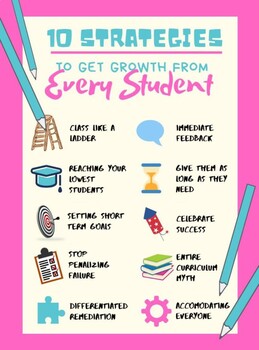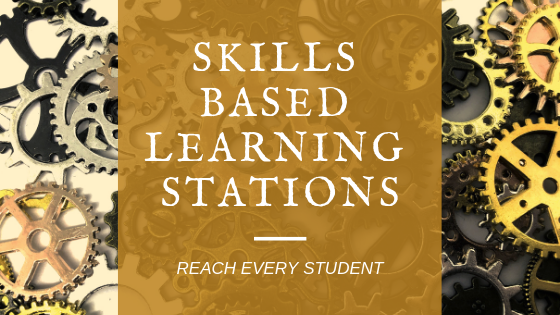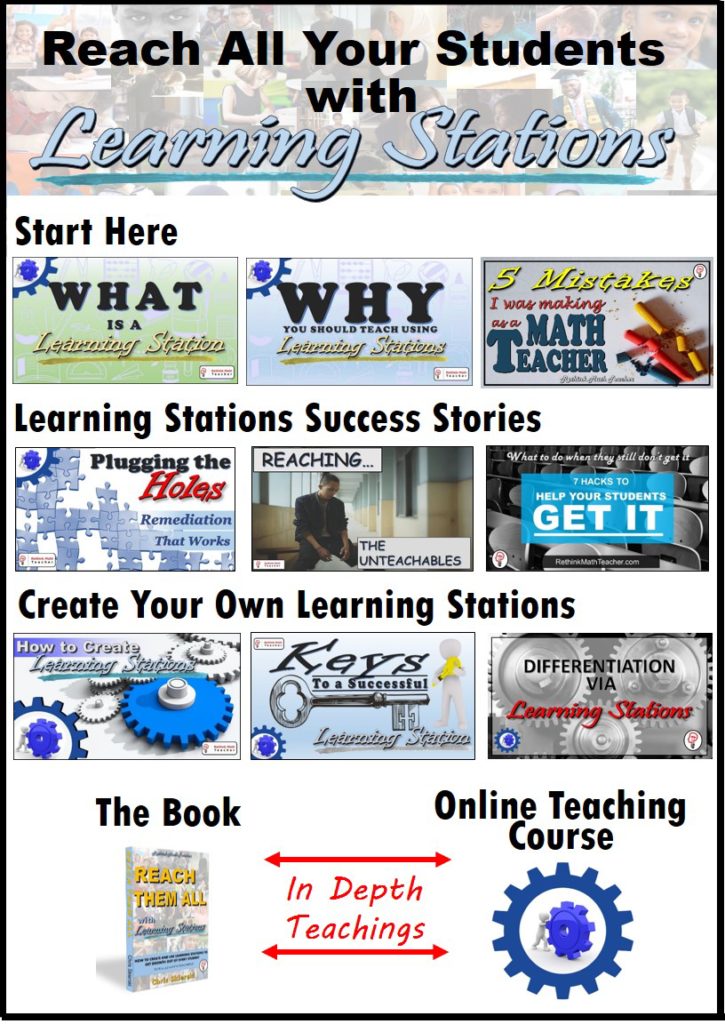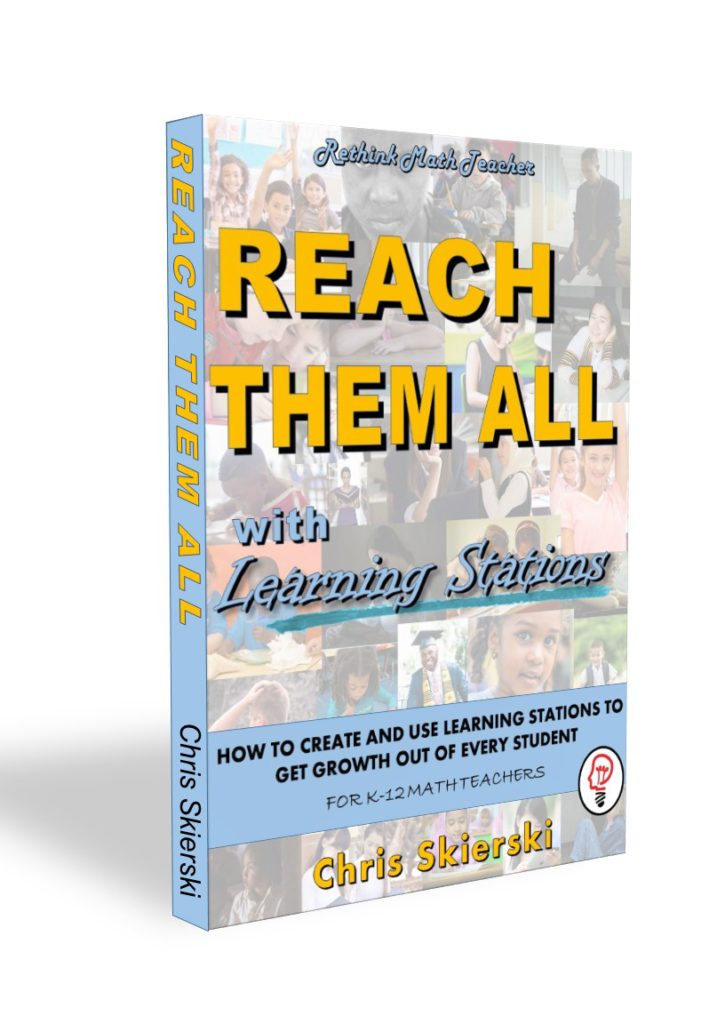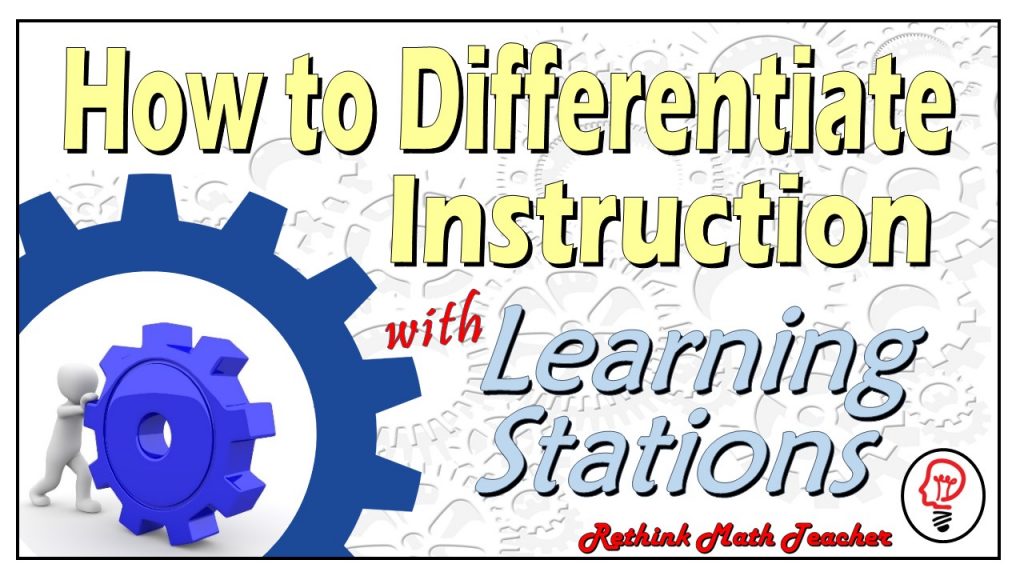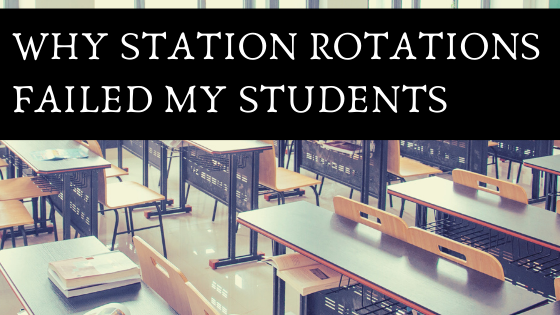
What is a Station Rotation
Station Rotations are a type of differentiation that has the teacher put the students into different groups within the classroom. Each group then performs a different task for a set amount of time, and then the groups rotate to a different activity, repeating this rotation until all groups of students have completed all activities.
Typically, the class is divided into three groups. One group is with the teacher, for a reteach. Another is working independently on practice problems – usually on a technological device. And the final group is doing some group assignment.

The Benefits
There are several nice things about station rotations.
First, it allows the teacher to teach a smaller group of students
This provides her the opportunity to have more meaningful interactions with them. She can thus, assess what they’re struggling with, and provide direct support.
Second, it gets the students moving around
While this does create classroom management issues, movement helps students refocus on what they’re doing. It also provides a bit of relief from the monotony of their academic schedules.
Third, it forces chunking
A really good teaching strategy is to chunk your lesson plan into mini sections, transitioning from one activity to the next every ten to twenty minutes. This helps students stay engaged, and allows their brain an opportunity to process what it has absorbed, and re-engage in the next activity.
Often, math teachers go on and on with the same thing for way too long, and wonder why the students have checked out. The answer is that it’s hard for anyone to focus that long on one thing; especially young people. By rotating through stations, it forces the math teacher to chunk the lesson by having the students rotate from one activity to the next, every 15-20 minutes.
The Negatives
Classroom Management
Because the teacher is involved in teaching a small group, it is often hard for her to manage the rest of the class. While there are many things about rotations that help make the class more manageable, if a student (or students) gets off task and the teacher has to address it, she can no longer teach the small group she is working with.
And because the teacher’s attention is on her small group that she’s providing instruction for, it is easy for her to miss what other students in the class are doing.
No Feedback
Whenever I walk into a room doing rotations, I like to go see the groups that are doing practice problems. It is not uncommon for me to see that group having completed many of the practice problems, but having done them all wrong.
Practicing a math concept incorrectly is of very little value. In fact, the student may be reinforcing a bad skill, thus it is actually detrimental to their learning.
With station rotations, the teacher is not able to come assist the students that she is not working with. So if she has not planned properly, they may get stuck and not have the tools (or ability) to get the help they need to be able to do the work correctly.
It misses the main reason the students are struggling
When a student is struggling to grasp a math concept, they typically need one of the following:
- More practice
- More feedback when they practice
- Skill development
- They can’t do a prerequisite skill needed for the skill they are working on. For example, they can’t do long division because they don’t know their times tables
Station rotations became popular because they exposed students to different types of learning styles, and different activities. The though being that since you were exposing them to all this differentiated instruction, they would better master it. Sadly, this is not the case. To learn a math skill you need a good teaching and lots of practice with immediate feedback. Rotations do not in and of themselves accomplish this.
If you have a student working on adding fractions with uncommon denominators, but he still doesn’t know how to find the common denominator, or how to convert fractions, he will not be successful at adding fractions until he is remediated and learns these skills first. It won’t matter if he does a project based learning activity, or group work, or a color by numbers worksheet – he will not be able to do the work until he masters the prerequisite skills needed.
Why I Stopped Doing Rotations
I realized that while I liked the differentiated instruction that stations provided, the method was not reaching my students. My weaker students were still struggling while my stronger students were being held back. My entire class was still being factory lined through a set of processes with a specific amount of practice problems and then progressed to the next skill regardless of whether or not they were ready for it.
What I do Instead
Now, I differentiate the skills that my students are working on.
For example, if the class is supposed to be adding fractions, but I have a few students who can’t simplify fractions, I put them in a station to develop that skill. And if I have other students who can’t covert two fractions to new fractions with common denominators, they get put in a station on that skill.
Inside these skills based learning stations they are provided the three things that we mentioned above that helps them be successful. (1) They get a tutorial that they are able to access as they do their practice problems. (2) They get as many practice problems as they need to be successful. (3) They get immediate feedback when they do the work, so that they know whether or not they are doing the work correctly. Thus, they can learn from their mistakes, or gain confidence as they do the work correctly.
Using Skills Based Learning Stations I can differentiate based on students’ needs, while providing them with everything they need to be successful – including time. If a student is taking longer to master a skill than his peers, that okay. He stays in that station longer without slowing down the rest of the class.
If you want to learn more about learning stations, I have FOUR resources for you:
1. Skills Based Learning Stations – an online article
This article will help you better understand what a skills based learning station is and how it works.
2. A free cheat sheet
This digital download is full of helpful tips and resources to help you get started with skills-based learning stations
3. The Book: Reach Them All.
This book will walk you through the process, step by step, or creating skills based learning stations, as well as how to implement them with success in your class. It’s available as a digital download through TpT, or as a soft cover through Amazon.
4. An online course: How to Create and Implement Learning Stations.
This course has all the content from the book, but delivered in video format with me as your teacher. Ton’s of resources are included, as well as a digital copy of the book. Enroll here.





